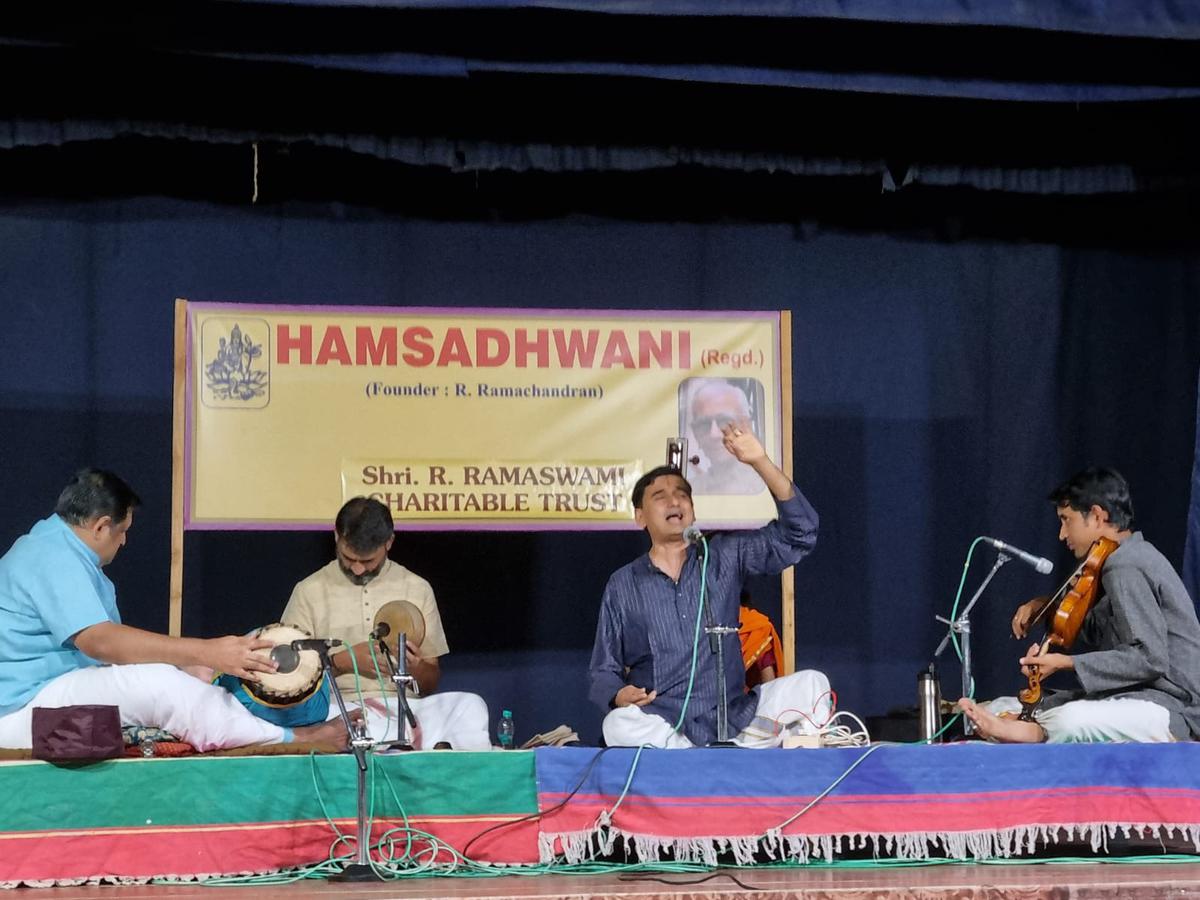D.B. Ashvin’s concert was replete with rakti ragas
Legacy has its advantages, but it also means constantly living up to expectations. D.B. Ashvin, the grandson of T.K. Rangachari, one of the doyens of Carnatic music, is an engineer by profession and a Carnatic vocalist by passion. During an interview to this writer a few years ago, Ashvin had said he was working towards evolving a style of his own.
His concert that evening under the aegis of Sri R. Ramaswami Charitable Trust for Hamsadhwani, at the Youth Hostel, Adyar, showcased his vision. Traversing across octaves with ease, Ashvin structured the ragas in a way that brought to the fore their nuances and distinct beauty.
He chose a repertoire replete with rakti ragas, and handled them with confidence. Purvikalyani and Kedaragowla were rendered in detail.
In his Purvikalyani raga exposition, Ashvin made efforts to build the raga edifice in a slow and steady manner with emphasis on the mandatory brigas and karvais wherever needed. Oothukadu Venkatakavi’s ‘Padmavati ramanam’ was the composition. Ashvin’s accent on the emotive quotient could be felt in his niraval at ‘Yat gopi vadanendu’, and the raga’s vibrancy were highlighted in the subsequent swarakalpana passages.
Elaborate raga essay
Ashvin’s exhaustive exposition of Kedaragowla, presented later in the concert, needs special mention. Kedaragowla is an audava-sampoorna raga that does not contain the gandharam and dhaivatam notes in the arohanam, while it includes chatusruti dhaivatam and antara gandharam in the descending scale. The lower register sancharas induce sweetness and sobriety, while the upper registers demand a dynamic approach. The singer needs to make sure that these contrasting aspects are not conveyed through loud and overzealous vocal excursions. Ashvin treated the raga essay with extreme care, keeping in mind the above factors , and his vocal flexibility. Result, a beautiful and colourful portrait of Kedaragowla. Ashvin selected ‘Tulasi bilva’ by Tyagaraja , and his extrapolation at the charanam line ‘Karunato nenaruto paramanandamuto’ was treated with impeccable understanding of the raga and sahitya bhava. Here, Ashvin went for a spirited swarakalpana with panchamam as the landing note.

Asvin with Vittal Rangan, Aswin Sridhaaran on the mridangam and K.V. Gopalakrishnan on the kanjira.
| Photo Credit: Special Arrangement
The whole exercise and the tani avartanam by Aswin Sridhaaran on the mridangam and K.V. Gopalakrishnan on the kanjira, were enjoyable in addition to their perfectly subdued support to the entire concert. Vittal Rangan on the violin played his part with alacrity. His replies during Purvikalynai and Kedaragowla raga essays were vivacious.
Ashvin also sang ‘Era napi’ the Thodi varnam, ‘Ninnada nela’ in Kannada (Tyagaraja) with a luminous swarakalpana package, ‘Soundarrajam’ in sedate Brindavana Saranga (Muthuswami Dikshitar), ‘Arul seyya vendumayya’ in Rasikapriya (Koteeswara Iyer), and ‘Guruvayoorappane appan’ in Ritigowla (Ambujam Krishna) prefaced with slokas in ragamalika.
The Chennai-based reviewer writes on classical music.
For all the latest Entertainment News Click Here
For the latest news and updates, follow us on Google News.
